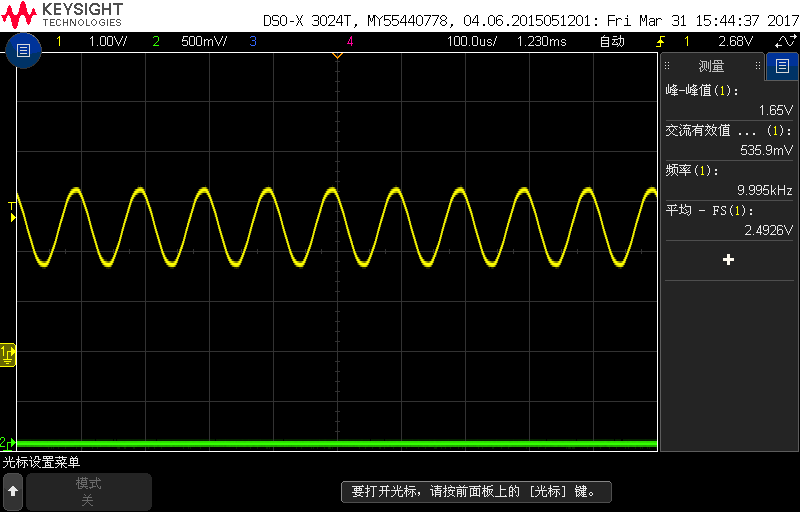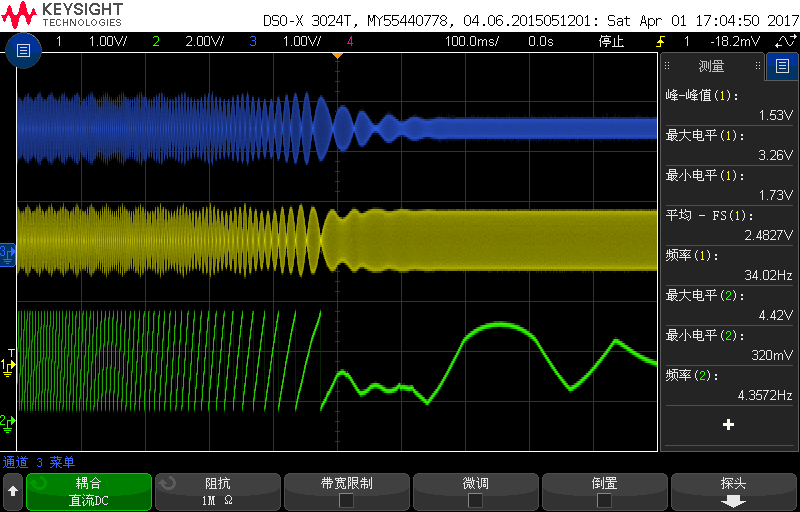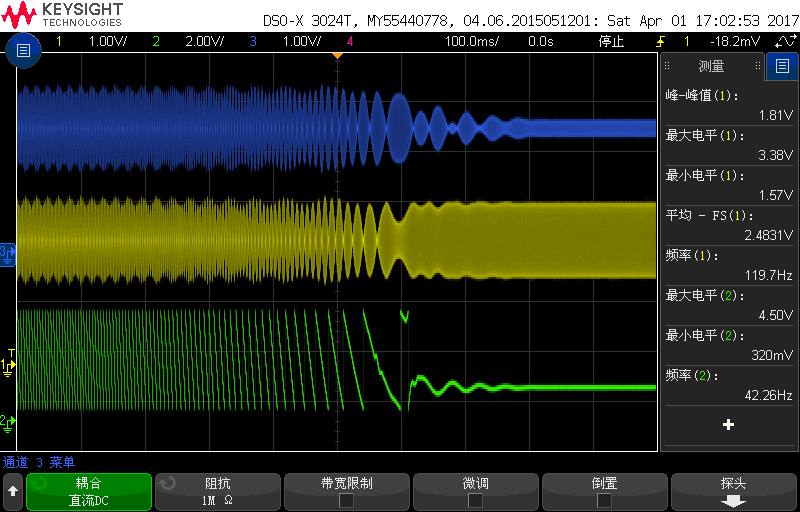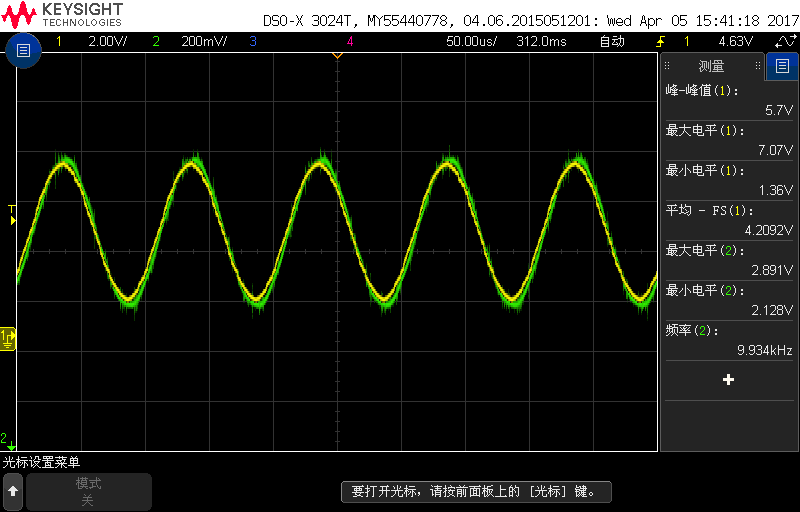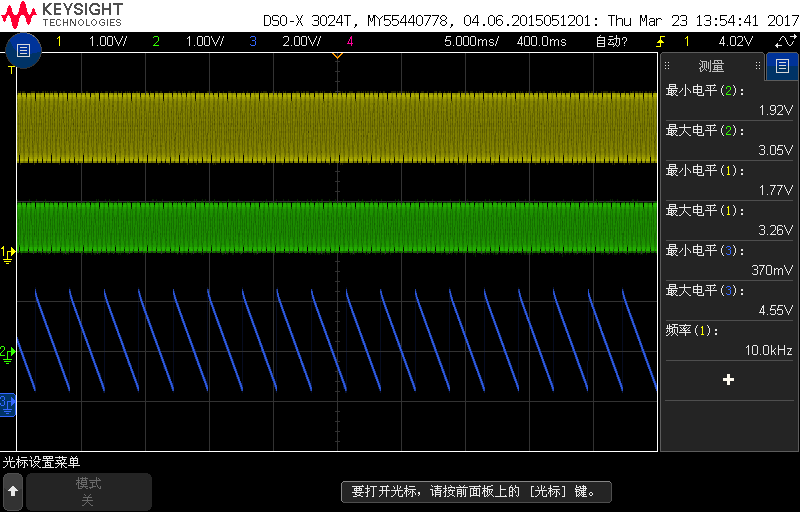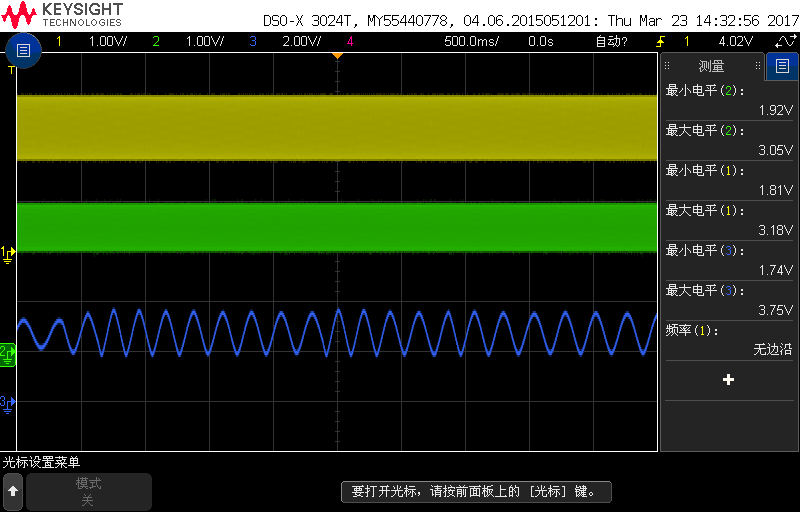we occur a new problem when we test out product in simulative environment.
2 of our 4 boards didn't work normally. When the motor is still, the PGA411 on the two boards output wrong info.
The angular velocity and angular position is wrong and the AOUT either. The MCU got the wrong message and control the motor wrongly.
I have changed one of the two PGA411, and the phenomena keep the same.
The image below is the waveform of OSIN(yellow), OCOM(green) and AOUT(blue) when the motor is still. And the output of AOUT is changing.
The issue only occured when the motor is still.
Do you have any advise to solve it?
Many thanks!



